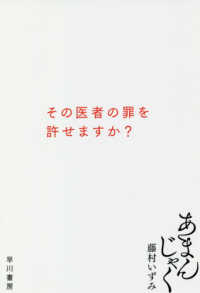- ホーム
- > 洋書
- > ドイツ書
- > Humanities, Arts & Music
- > Linguistics
- > general surveys & lexicons
Full Description
This volume collects ten studies that propose modern methodologies of analyzing and explaining language change in the case of various morpho-phonological and morpho-syntactic characteristics.








